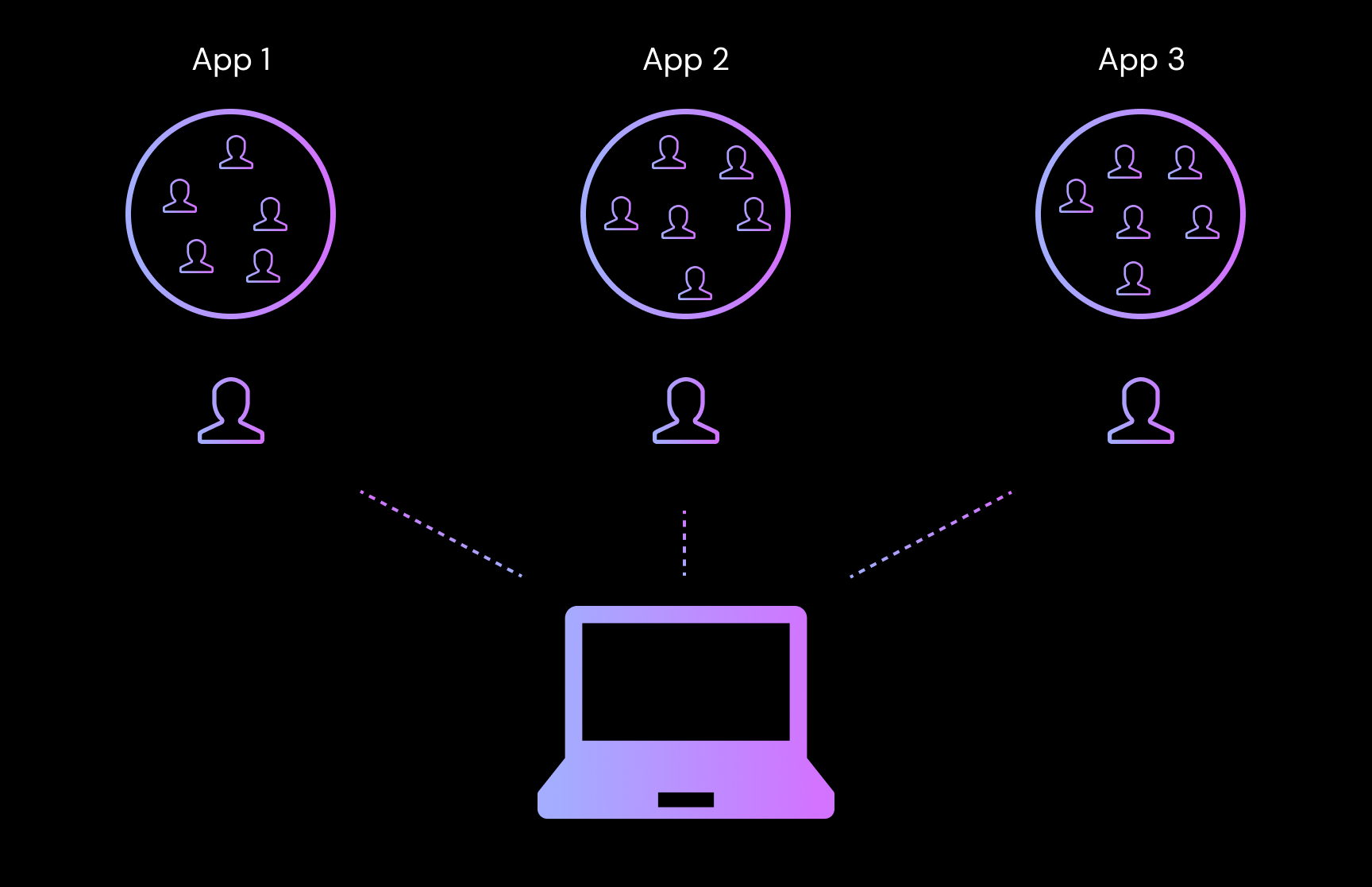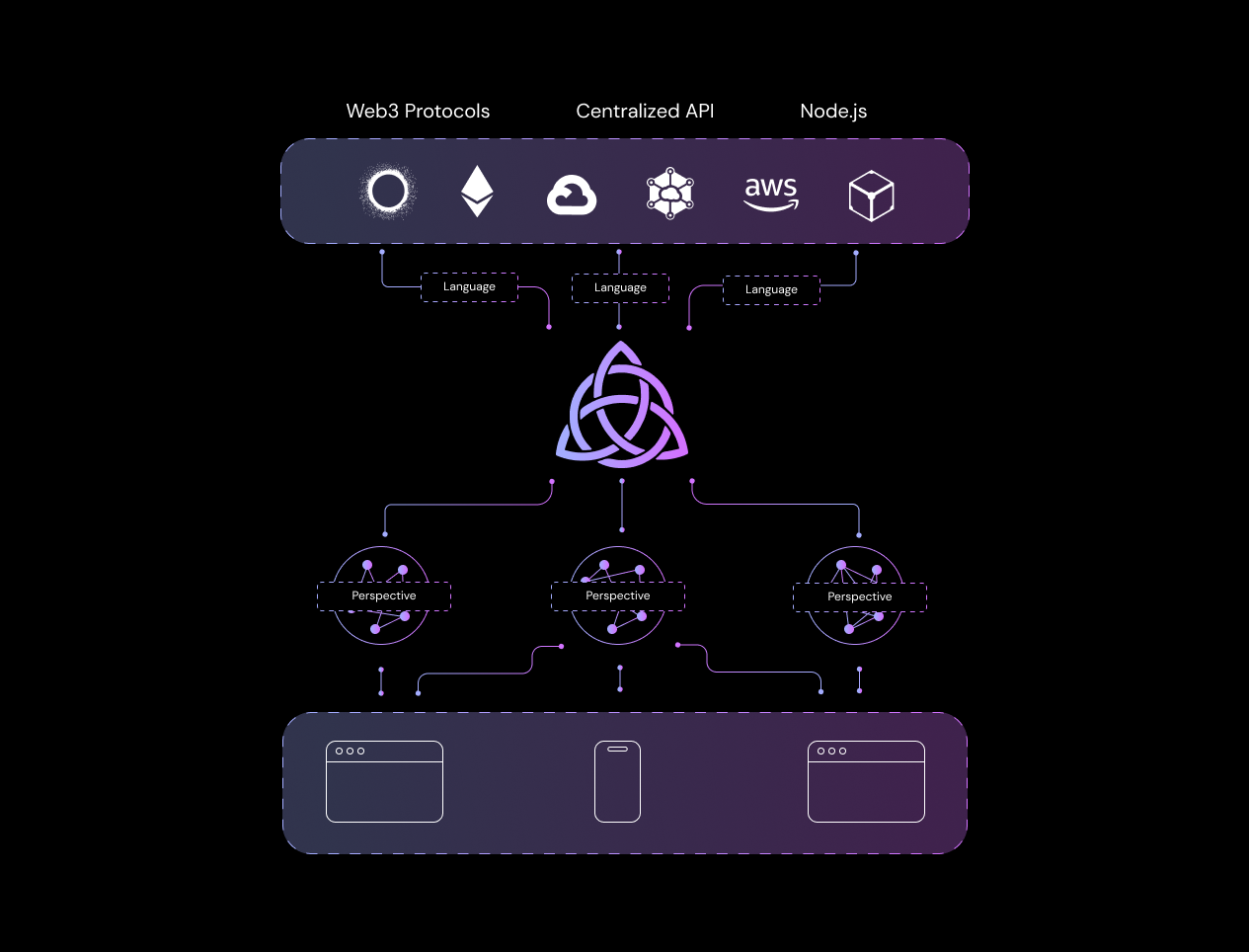Introduction
What is ADAM?
The internet has evolved from creating and sharing simple documents to highly social digital experiences. Yet, there is still no social infrastructure baked into the fabric of the web.
The lack of a social protocol has resulted in companies taking the role of building out these social networks in silos, harvesting and profiting on the content created within these social spaces.
ADAM tries to solve this problem, by putting agents and their social spaces at the core of our digital communication.
 A person has several user accounts on several
social media networks, creating silos between data, and ownership at the app
level.
A person has several user accounts on several
social media networks, creating silos between data, and ownership at the app
level.
Why should I build on ADAM?
ADAM solves a lot of common challenges when developing social applications:
- Cold Start: When a new social platform has limited content and a small user base, it is challenging to attract users and engagement. By interacting with already existing agents and their social groups, you don't need to onboard users.
- Authentication: Authentication is already taken care of, reducing the overload of having to implement authentication flows and user management.
- Privacy by default: Each social group in ADAM is it's own private network, making communication private by default.
- Database management: ADAM is completely decentralized, hence there is no database to manage, and no infrastructure you need to scale.
- Interoperability: You are not locked into using one kind of storage technology, and you can switch out your tech stack incrementally. With ADAMs Language implementation, you are able to interact with any existing centralized or decentralized system.
- Smart Contracts without fees: With ADAMs Social DNA, social spaces can easily add their own small programs (smart contracts) using prolog.
How does it work?
ADAM defines a minimal set of assumptions of what is needed to create any type of social application.
| Definition | Description |
|---|---|
| Agents | The agents (users) in the network. |
| Languages | The different ways agents can express ideas. |
| Perspectives | The collection of these expressions organized in a meaningful way. |
Through a combination of these basic principles, two important concepts are constructed:
| Definition | Description |
|---|---|
| Neighbourhoods | Shared Perspectives. |
| Social Organisms | A Neighbourhood acting like a collective Agent. |
Here is a visualization of how these concepts interact with each other:

You can read more about these concepts in the "Essentials" section.
How does this differ from Nostr / Bluesky / Mastadon / etc?
There are many similarities between ADAM and Nostr, Bluesky, and other social protocols, but there are also some key differences:
-
Agent-Centric: Nostr, Mastadon and Bluesky all are federated systems. In federated systems, there are still servers that control the users access to their data. In contrast, ADAM is a true P2P network.
-
Capability grants: ADAM implements a capability token system. Every app needs to be granted access to an Agents data, by obtaining a temporary token. At any time the agent can revoke these tokens in their ADAM instance. On the other hand, each Nostr app needs to keep the secret key locally. This makes the attack vectors greater. If an attacker steals the secret key, all the users data could be leaked.
-
Interoperability: Languages in ADAM is a powerful concept that makes any Expression an Agent creates resolvable by another Agent through the URL of that Expression. Having a generic way of resolving data independent of the underlying protocol makes ADAM interoparable with any kind of centralized, or decentralized system.
-
Validation rules: More info coming.
Why?
The goal is to arrive at scalable and interoparable communication infrastructure that enables group agency without imposing a bias on how a group manages itself.
This is the real problem we're facing when trying to provide a technological solution to the web's fractured sense-making.
AD4M is a sense-making network disguised as an app development framework. AD4M apps don't have to leak any of the AD4M concepts at all, and they would still be interoperable with each other to the degree of just being different views over the same agent-centric semantic web.